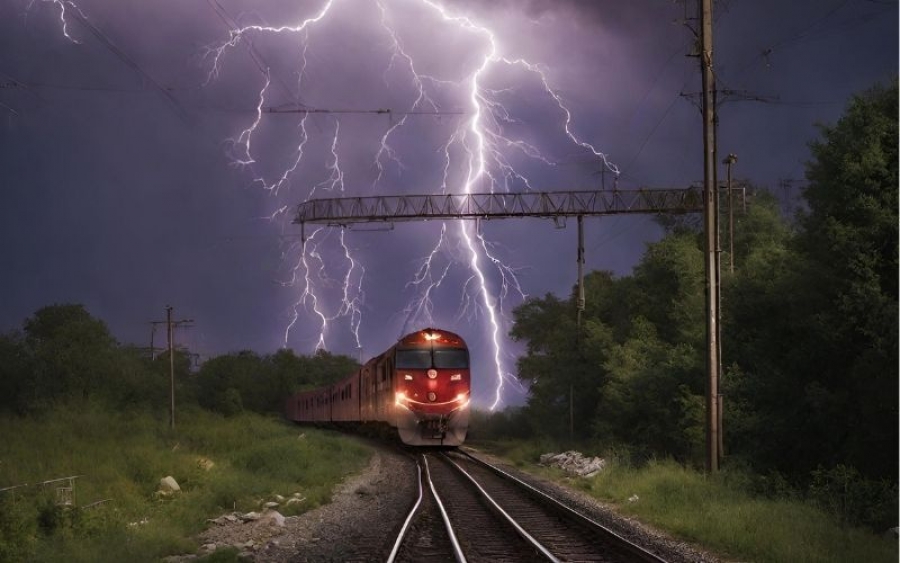
The protection of railway systems from lightning strikes is important, not only against direct strikes, but also against internal overvoltage impulses. Railway stations, especially when they are located in open terrain, can be affected by travelling impulses, even without the direct impact of lightning.

Lightning Protection of Rail Systems
Lightning is a natural atmospheric phenomenon that occurs as an electrical discharge between clouds or between clouds and the ground. This event contains millions of volts of electrical charge and causes a large release of energy within seconds. The metal structure of rail systems also becomes a potential target for lightning strikes due to its good conductivity. As a result of lightning strikes, serious problems such as disruption of signalling systems, power outages and even melting of rails can occur in rail systems.
Protection of railway systems from lightning strikes is important not only against direct strikes but also against internal overvoltage impulses. Railway stations, especially when they are located in open terrain, can be affected by travelling impulses, even without the direct effect of lightning. This means that transient voltages and switching pulses are frequently experienced and can pose a serious threat to electronic systems, disrupting sensitive electronic equipment such as railway signalling and communication systems. Lightning protection strategies of railway systems must therefore be effectively designed and implemented, not only against direct lightning strikes, but also against such transient voltage surges and switching pulses.
%20(2).jpg)
On the other hand, effective lightning protection of railway systems should include four basic protection elements: external lightning, internal lightning, earthing and equipotential bonding. External lightning allows lightning to strike directly and absorb and dissipate its energy, which helps to protect structures and power lines. Internal lightning protects internal installations by preventing lightning from penetrating the system by indirect means. The earthing system prevents damage to systems and devices by safely transferring lightning energy to the ground. Equipotential bonding minimises electrical potential differences and reduces electrical interference and indirect lightning effects. The use of B+C class protection products in main switchboards, C class protection products in secondary switchboards and D class protection products in front of sensitive systems is of high importance at the point of gradual protection in LV surge arrester systems. This graded approach provides comprehensive protection against different levels of electrical hazards and increases the safety of railway systems.
Earthing in Rail Systems
Earthing in rail systems is one of the basic components of system safety and operation. Earthing ensures that electrical overloads are safely transferred to the ground. This is particularly vital during lightning strikes. Earthing in rail systems protects both people and equipment by ensuring that high current is transferred to earth in the event of a direct lightning strike or electrical leakage.
In the construction stages of earthing, the effectiveness of connection points and metal evenings plays an important role. The preferred method for the durability and reliability of the connection points is usually thermowelding applications. Thermowelding increases the effectiveness of the earthing system by making the connection points more durable and long-lasting. In addition, every metal component in rail systems must be connected to the same earthing system. This ensures that an equipotential condition is maintained along the entire track and station, thus minimising electrical hazards. In particular, keeping the rail earth resistance as low as 10 ohms allows fault currents to flow more quickly and thus more effectively manage potential hazards in the system.